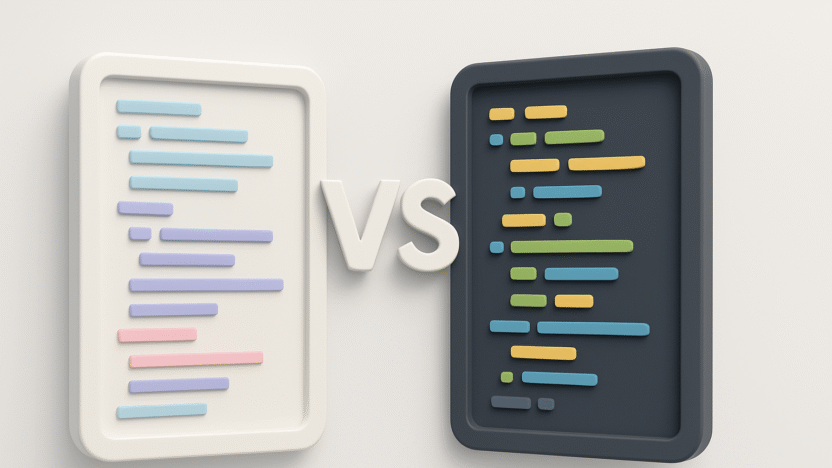🧠 Introduction: Why “Clean Code vs Clever Code” Is the Debate That Won’t Die
In the ever-evolving world of software development, one debate continues to spark intense opinions across all experience levels: clean code vs clever code. As of 2025, this age-old conversation is more relevant than ever, thanks to an increasingly collaborative, AI-assisted, and performance-sensitive ecosystem.
Developers today have access to intelligent tools, massive open-source communities, and global teams. In such an environment, should you strive to write code that’s readable and simple, or one that’s optimized, compact, and perhaps a little “too smart”?
This article will take a comprehensive look at clean code vs clever code—what they mean, where they shine, where they fail, and how to make the right decision in real-world projects.
🧼 What is Clean Code?
Let’s begin by defining what developers mean when they talk about clean code.
Clean code is:
- Easy to read and understand
- Intuitive and self-explanatory
- Modular and testable
- Free from unnecessary complexity
- Maintains a consistent style
It follows established software principles such as:
- KISS (Keep It Simple, Stupid)
- DRY (Don’t Repeat Yourself)
- SOLID principles
- YAGNI (You Aren’t Gonna Need It)
✅ Example of Clean Code (Python):
def calculate_invoice_total(items):
total = 0
for item in items:
total += item.price * item.quantity
return total
This function is easy to read, modify, and test. Anyone — from a junior developer to an AI code assistant — can immediately understand what it does.
🤯 What is Clever Code?
On the other side of the clean code vs clever code debate lies clever code — short, optimized, and often cryptic.
Clever code is:
- Optimized for performance or brevity
- Often uses advanced or obscure language features
- Typically less readable and harder to maintain
- Sometimes more “elegant” but at a cost
❌ Example of Clever Code (Python):
total = sum(i.price * i.quantity for i in items if hasattr(i, 'price'))
It’s compact and performs the same task — but it’s harder to debug, extend, or understand at a glance.
📈 Why Clean Code Matters More in 2025
1. Rise of AI-Driven Development Tools
Tools like GitHub Copilot, ChatGPT, Cursor, and Amazon CodeWhisperer are revolutionizing how developers write and interpret code. These tools are trained on vast amounts of clean code, not clever hacks.
Clean code is AI-friendly code.
If your clever logic breaks convention or lacks clarity, AI models may misinterpret or misapply it, leading to bugs or misaligned logic suggestions.
2. Remote-First and Global Teams
In 2025, most engineering teams are hybrid or fully remote. That means:
- Less face-to-face discussion
- More asynchronous collaboration
- Higher reliance on documentation and code clarity
Clean code bridges communication gaps. Clever code creates silos.
3. Maintainability is More Expensive Than Performance
Let’s be real: very few systems fail because the code wasn’t clever enough. They fail because:
- No one understood what the previous developer did
- Bugs were hard to trace
- Extending the system broke hidden logic
80% of a software system’s cost is in maintenance, not development.
Clean code is your insurance policy for long-term success.
⚡ When Clever Code Is Actually Worth It
There are some niche cases where clever code is not only acceptable — it’s preferable.
✔️ Situations Where Clever Code Works:
- Competitive programming
- Low-level systems programming
- Embedded systems with memory constraints
- High-performance algorithm design (e.g., game engines)
- Code golf challenges or hackathons
But even then, documentation and clarity should follow.
🔁 Clean Code vs Clever Code: Side-by-Side Comparison
| Feature | Clean Code | Clever Code |
|---|---|---|
| Readability | ⭐⭐⭐⭐⭐ | ⭐⭐ |
| Maintenance | ⭐⭐⭐⭐⭐ | ⭐ |
| Performance | ⭐⭐⭐ | ⭐⭐⭐⭐⭐ |
| Scalability | ⭐⭐⭐⭐ | ⭐⭐ |
| Collaboration | ⭐⭐⭐⭐⭐ | ⭐ |
| Debugging | ⭐⭐⭐⭐⭐ | ⭐⭐ |
| AI Tool Support | ⭐⭐⭐⭐⭐ | ⭐⭐ |
🛠️ How to Write Clean Code in 2025 (Checklist)
1. Use meaningful names:
// Clean
type InvoiceItem struct {
Price float64
Quantity int
}
2. Keep functions small and focused
- Each function should do one thing only.
- No nested logic or mixed responsibilities.
3. Write comments when necessary
- Don’t explain what the code is doing — explain why.
4. Eliminate dead code and magic numbers
5. Write unit tests
- Use tools like
pytest,Jest, orJUnit.
6. Use linters and formatters
- Prettier, ESLint, Black, gofmt, etc.
🧪 Real-World Example: Clean Code vs Clever Code in Action
Scenario: You’re building a backend for a payment processing API.
❌ Clever Code Approach (JavaScript):
return orders.reduce((a, b) => a + (b?.p || 0) * (b?.q || 0), 0)
✅ Clean Code Approach:
function calculateTotal(orders) {
let total = 0;
for (const order of orders) {
const price = order.price || 0;
const quantity = order.quantity || 0;
total += price * quantity;
}
return total;
}
The second version is longer — but it’s more testable, debuggable, and understandable.
🧘 Balancing Clean Code vs Clever Code: A Practical Guide
It’s not always black and white. Let’s explore how you can balance both intelligently.
✔️ 1. Optimize only when necessary
Profile before optimizing. Use tools like:
perf,Valgrind,Py-Spy, or Chrome DevTools
✔️ 2. Keep clever code isolated
If you must write clever code, put it in its own function or module with:
- Clear naming
- Extensive comments
- Unit tests
✔️ 3. Document cleverness explicitly
Include code comments that explain:
- Why it’s done this way
- What tradeoffs were made
- Where it might break
✔️ 4. Get peer reviews
Ask your teammates: “Is this understandable without me here?”
🏛️ Influences on Clean Code Philosophy
If you’re diving deeper into this debate, check out these cornerstone works:
These books emphasize that code is written for humans first, machines second.
🧠 Final Thoughts: The True Winner of Clean Code vs Clever Code
So, who wins in clean code vs clever code?
🎯 Verdict:
- Use clean code by default.
- Reach for clever code only when necessary — and always wrap it in documentation, tests, and peer review.
- The best code is the one that your future self or teammate can understand and maintain confidently.
💬 Conclusion
Where do you stand on the clean code vs clever code debate? Have you seen clever code backfire in production? Or did it save your bacon?
Drop your thoughts in the comments and share this post with your fellow devs!





